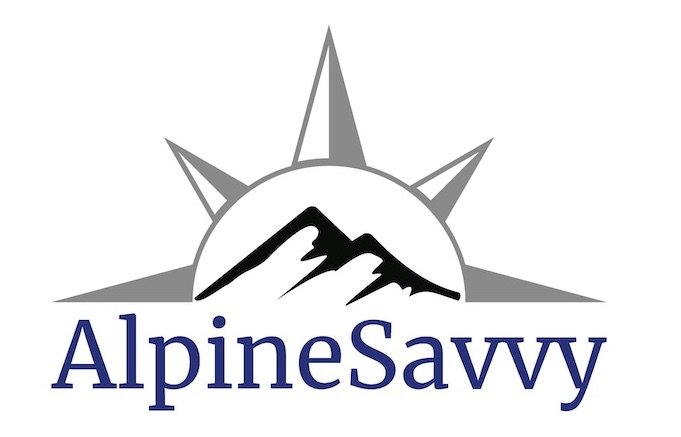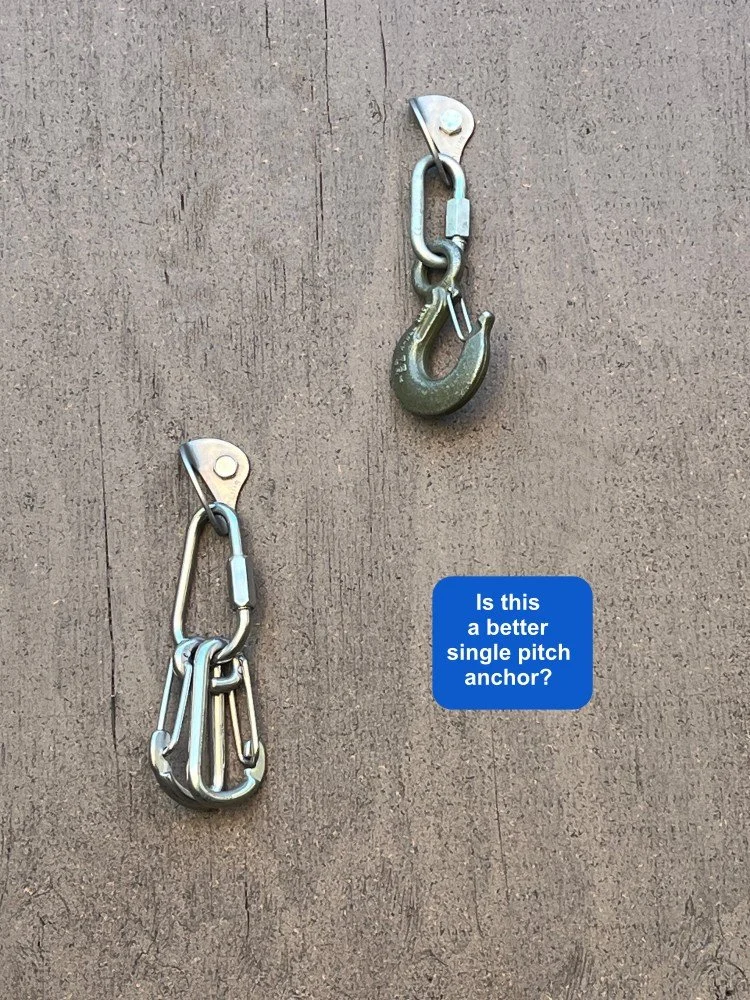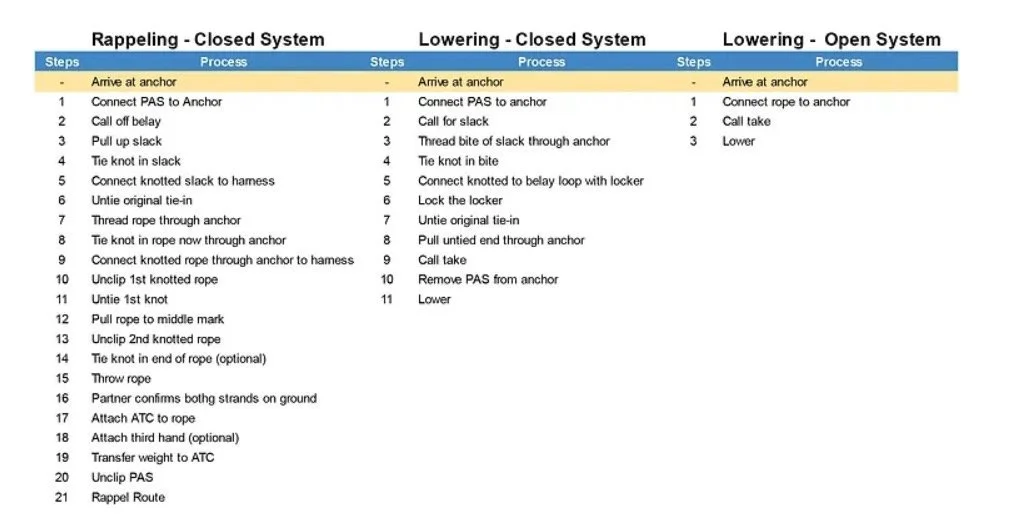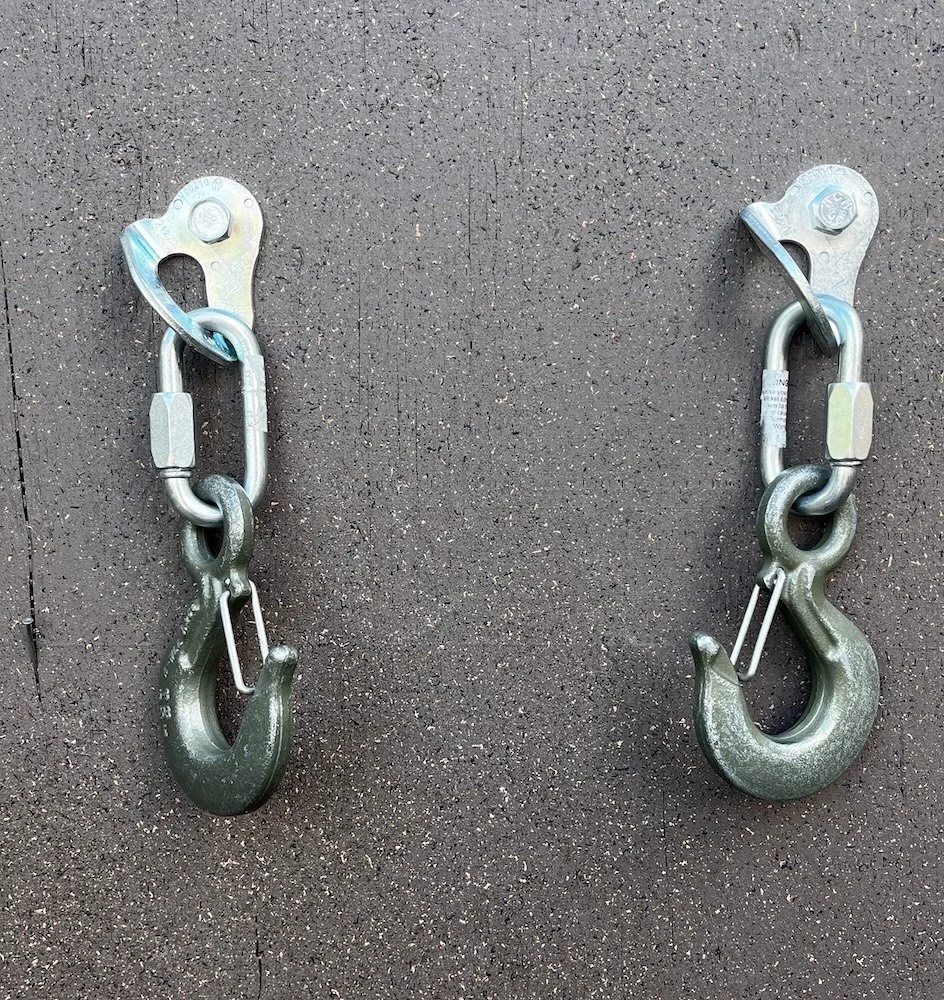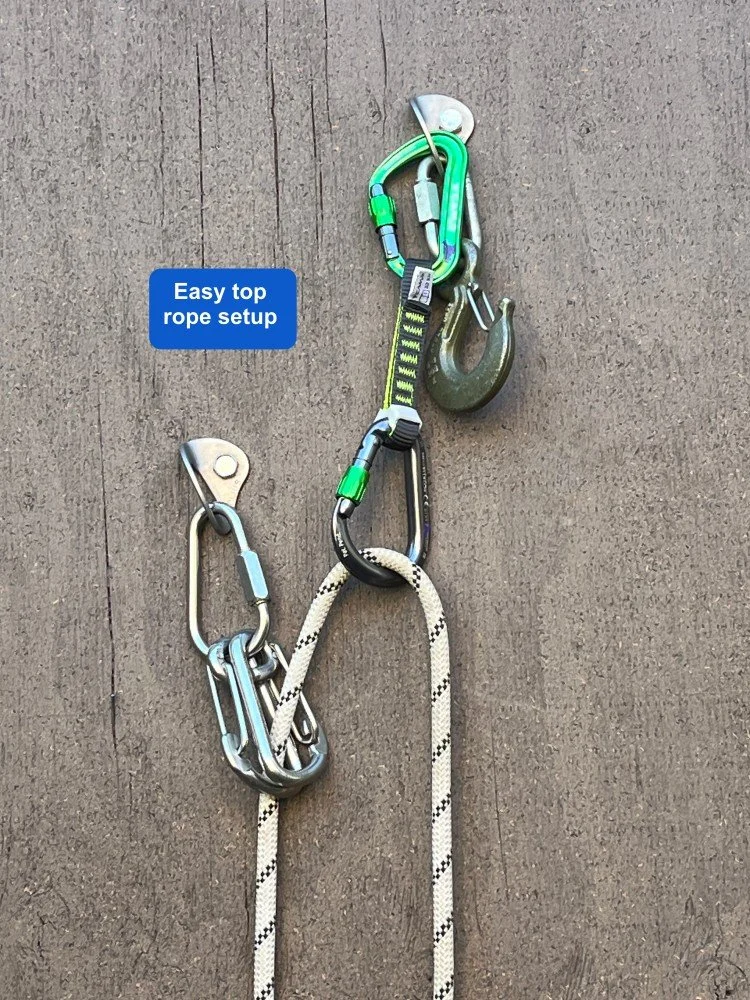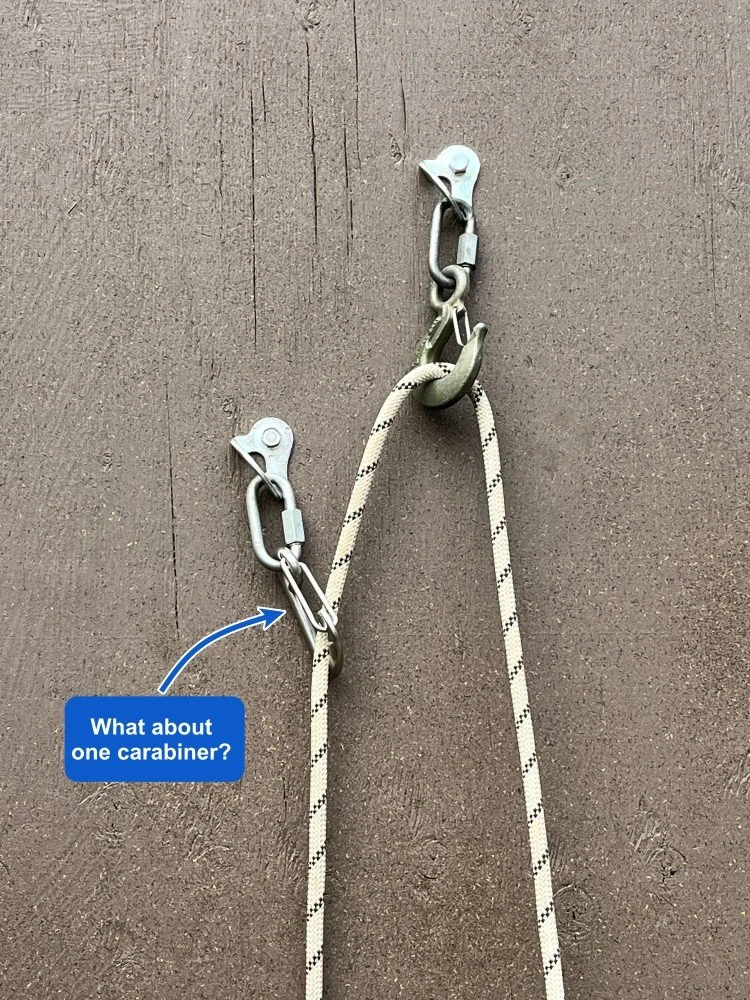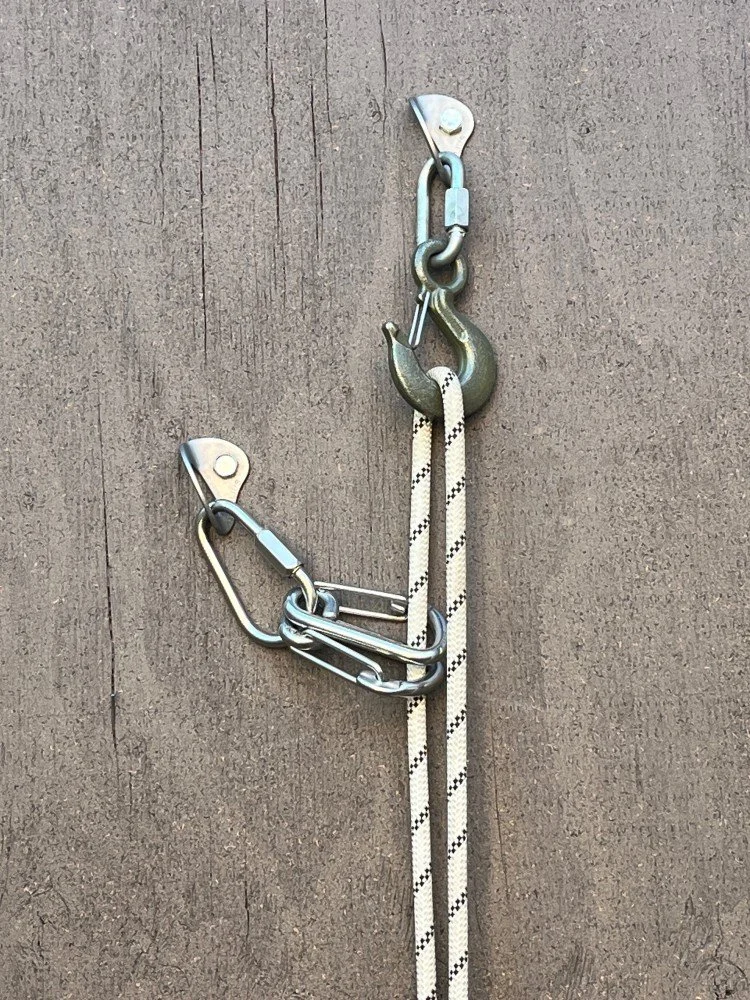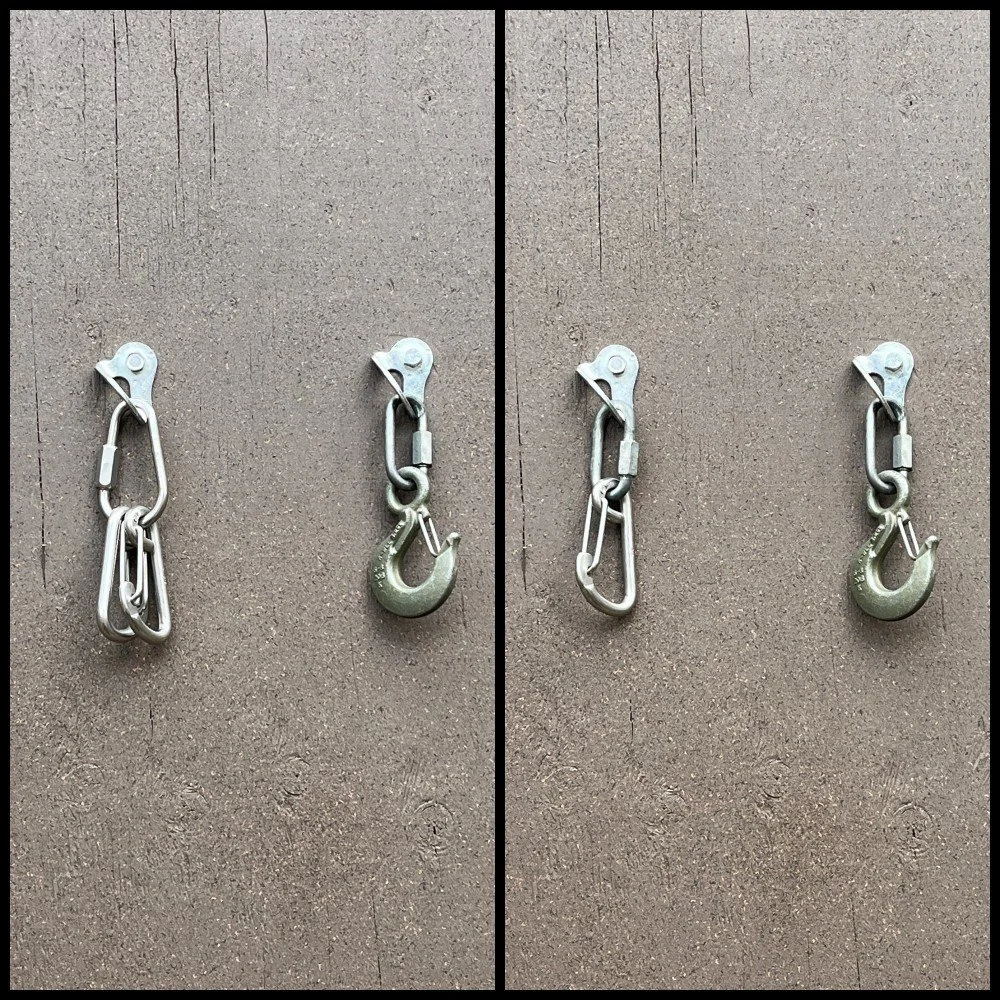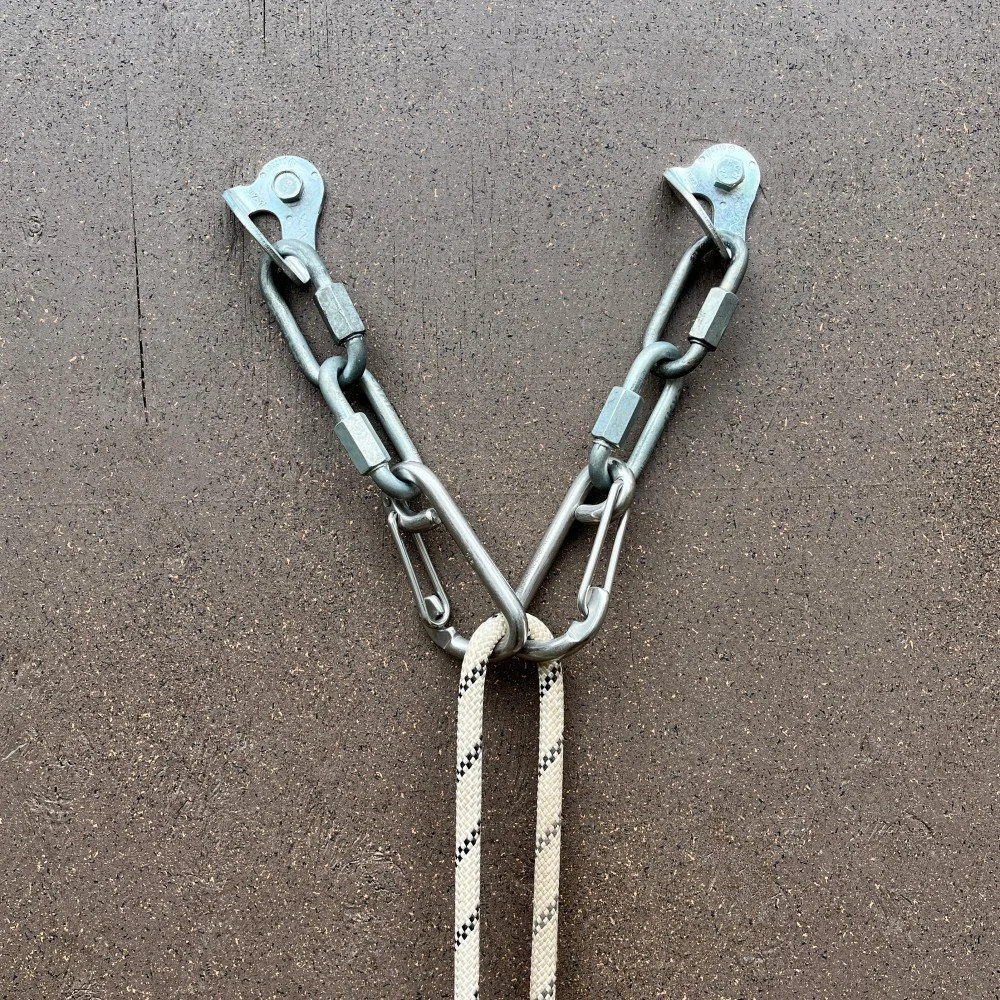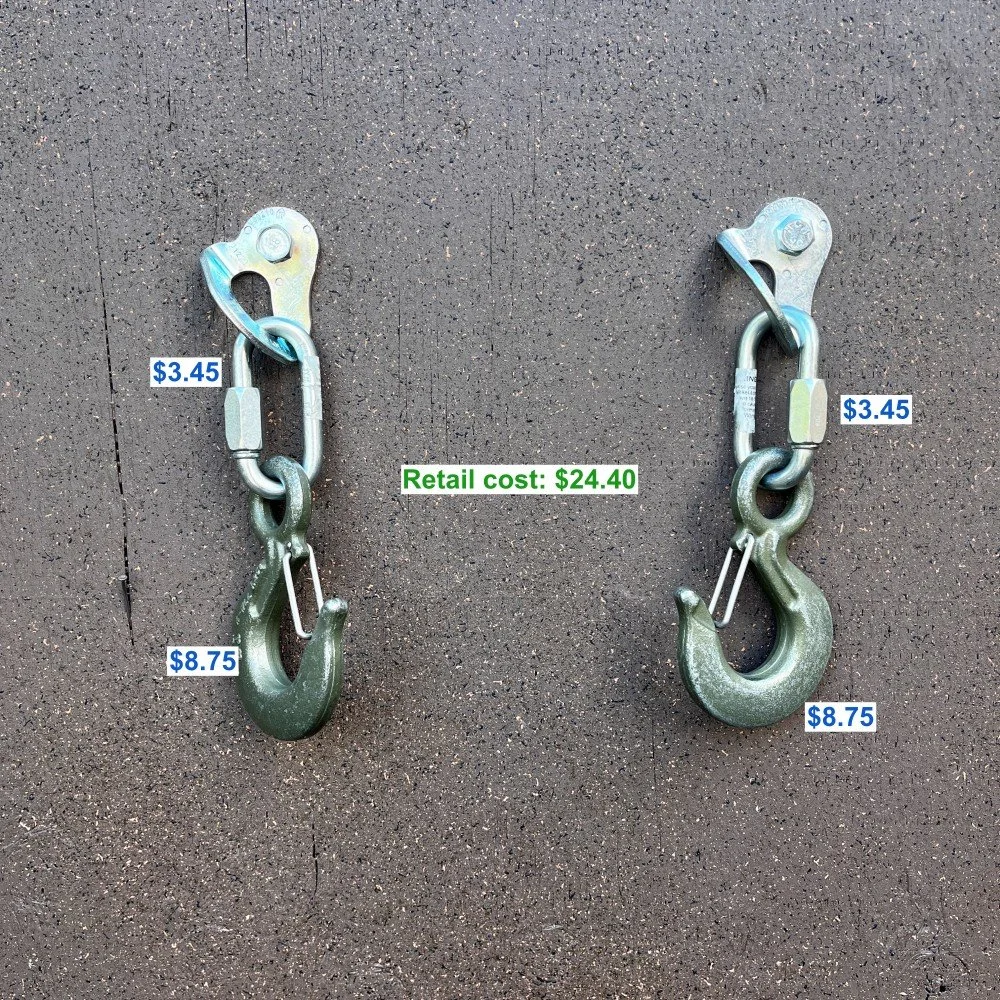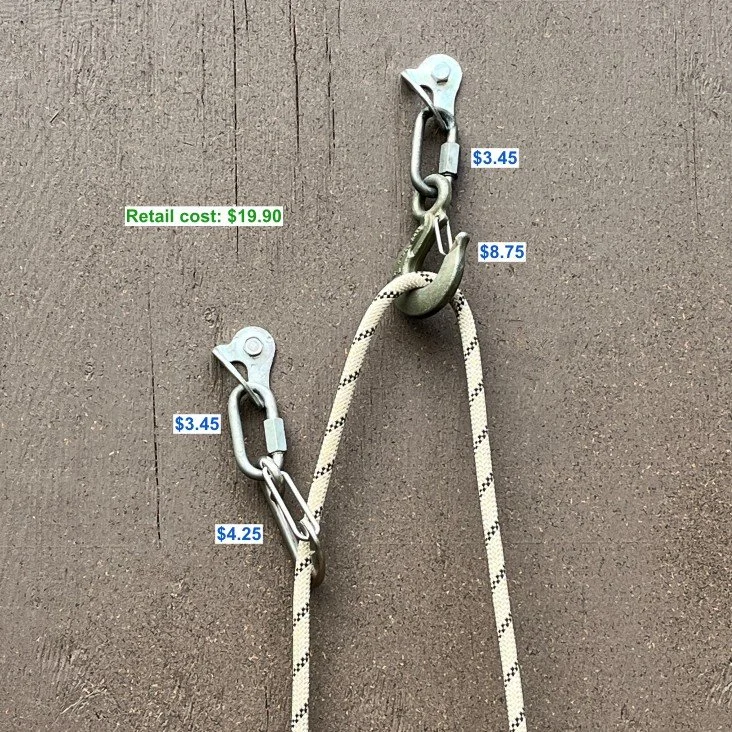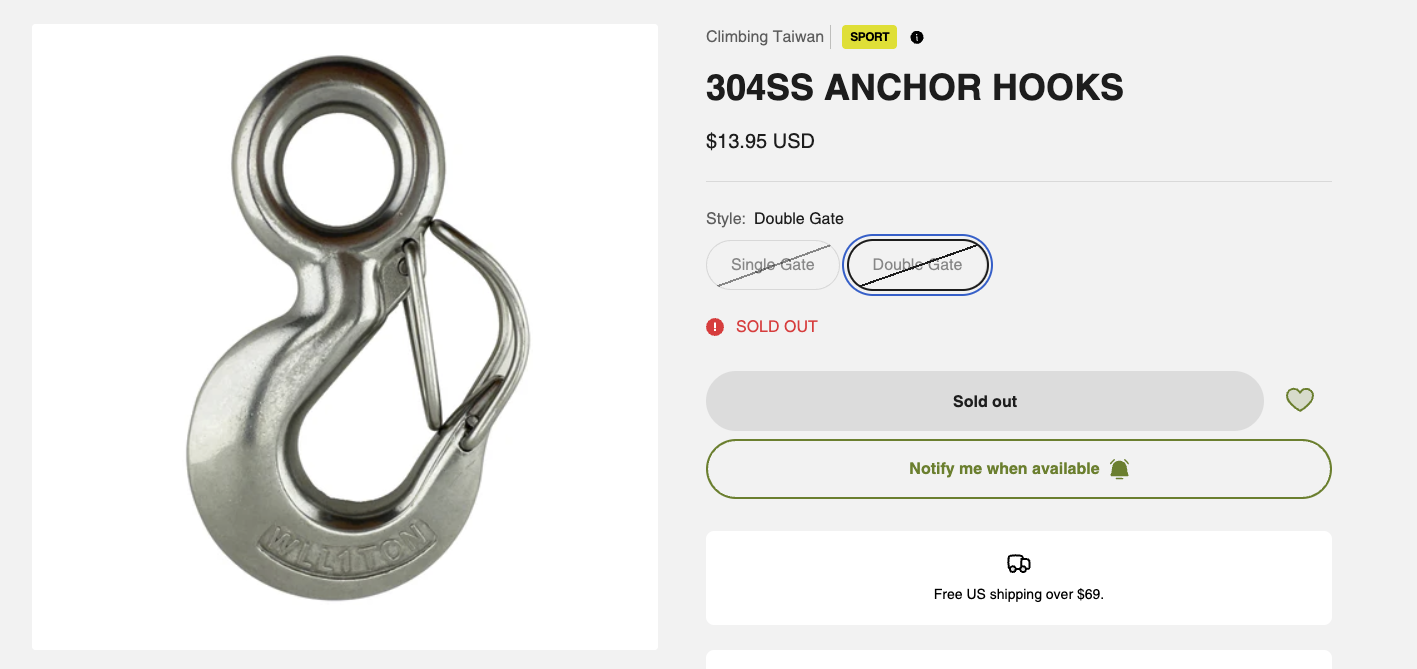Rethinking single pitch anchors
Normally, I publish a complete version of my articles for my Premium Members, and a shortened version of articles on the public part of my website.
However, for this article, I'm changing that.
Because I want this to reach the largest possible audience, I'm posting the entire article here on the public part of my website.
Inspiration and peer review for this article is from Kevin Maliczak, aka ClimbingTaiwan. Connect on his Instagram @climbingtaiwan and YouTube.
Bobby Hutton also inspired this article. Connect with Bobby on Instagram. @bobbyhutton1989, and YouTube.
Thanks to Evan Wisheropp for peer review of this article. Connect with Evan on Instagram, @evanwisheropp
For single pitch sport climbing, I'm a big believer that “clip and lower”, also known as an “open” anchor, is superior to rings, chains or quick links, aka a “closed” anchor.
This position is strongly supported by the American Safe Climbing Association. From their website:
“Durable lower-off hardware at the anchors [allows] efficient and safe descent without having to untie or retie the lead line. The ability to clip and lower to descend and clean a route greatly increases the safety margin for all climbers, preventing climbers from going off belay and preventing mistakes from happening while at the anchor.”
Closed anchors, such as chains, rings, or quick links, are fine for for multi pitch rappel anchors. They work because you have the end of the rope available to thread the chain.
For a single pitch climb, a closed anchor takes more steps to switch from climbing up to lowering down, making the process slower and more complicated.
Check out the nice diagram below from HowNOT2 for some actual numbers on this. The fewer steps the better! Lowering through an open system is clearly the simplest and fastest.
However, there's room for improvement on open anchors.
This is especially true for a common set up in the United States, two horizontal anchor (aka mussy) hooks.
Anchor hooks are extremely strong, long lasting, fairly intuitive to use, inexpensive, and easy to clip. That's good.
What's not so good?
“Easy to clip” can mean “easy to unclip”. A slip or fall from above the hooks can tension the rope across the gates, potentially unclipping the rope from one or both hooks.
This may have been the cause of a recent fatal accident in Alabama.
Below is my short video that shows the problem.
There's also some unclipping weirdness that can happen when unexpected rope twists meet that easy-to-open anchor hook gate. I've read several different accounts of this happening. An IFMGA guide made a Youtube video explaining the above accident; here's a comment from that video:
“There is another potential issue with the mussy hooks. I set up a climb with anchors not directly above the main part of the climb; it finished about 8 feet right of the start. After setting it up, I switched ends of the rope for the next climber. That way, the next climber would stay more in line with the current part of the climb because the quick draws were still clipped, now acting as directionals.
What was unexpected is that a bunch of twists got into the climber’s end. This twist must have been amplified as the rope shortened as the climber went up, since the twist wasn't working itself through the tension of the anchors at the top. I didn't think much of the twist until the climber had clipped just the mussy hooks at the top and started to be lowered. Only a step or two down, there was a pop which startled everyone. My guess is that the twist in the rope somehow curled up and over the wire gate of the mussy and unclipped. Luckily it only unclipped one. Luckily, this person knew how to clean routes and climbed back up and clipped themselves in direct and fed the rope directly through the quick links holding the mussy hooks.”
I think the twin anchor hook system be improved. Here's my checklist of the ideal clip and lower anchor:
The security of a “locker” on half the anchor, paired with the clipping convenience of an anchor hook.
Uses hardware that's generally low cost and widely available. (Although low cost shouldn’t be the primary consideration of an anchor system.)
Reasonably intuitive and easy to use, especially for people who haven’t seen this style of anchor before.
Have all the load going to an anchor hook, an extra stout piece of hardware that lasts a very long time before needing replacement.
Uses quick links to easily replace gear as it gets worn out. (Some manufacturers call this a “modular” system.) If you need to bring up an angle grinder to swap out hardware, that's lame.
Easy to set up a top rope off of your own equipment, and then have the last person lower off of the fixed gear.
Every component is more or less permanently attached, reducing the chances of some jack-hole stealing any part of the anchor hardware.
Can be installed on existing bolts that are either horizontal or vertical.
Zero twisting of your rope when lowering off because the load goes to a single point.
Harder to see from the ground. Lower “visual impact” is important in some climbing areas, not an issue in others.
Non-modular vs. modular hardware
Left: When the carabiner on the left wears out and needs replacing, you may have a big project.
Right: With the quick link “modular” system, it’s easy to replace the carabiner.
image: https://fixehardware.com/
Here’s an anchor that ticks all the boxes above: the easy clipping and durability of an anchor hook, plus the extra security of two opposite and opposed carabiners.
Notes . . .
Almost all hardware is stainless steel, which should pretty much be the standard when you're bolting outside. (Titanium is usually preferred for ocean areas that can get salt corrosion, but that's kind of a special case.) Stainless steel anchor hooks are available, but currently hard to find. Hopefully that will change soon.
Quicklinks are 8 mm. (That's kind of the “Goldilocks” size for quick links; not too big and not too small.)
All clipping points are perpendicular to the rock. This reduces friction / rope twisting, and makes it easier to clip.
The unusual piece of hardware is the pear shaped 8 mm quicklink. The wide bend in the bottom makes the carabiners easier to clip.
The carabiners are fixed eye, which makes them very difficult to “liberate” from the anchor. (Unless you bring up a wrench, and you're a jerk.)
Yes, the gates on the steel carabiners are pretty stiff. In this case, I think that's a good thing. You can quickly clip the hook, call for a take, and then if need be, use both hands to clip the rope to the bottom carabiners.
The opposite and opposed carabiners are there for security. It's functionally the same as a locking carabiner, but without any locking mechanism that gets corroded and stops working after it's been out in the elements for a while.
Is this overkill for just lowering off? Maybe. However, you know people are going to top rope on this, so why not add the extra security?
Want to make it simpler, lower cost, and easier to clip, with the trade-off of slightly less security? Put one carabiner on the bottom with a quick link. (Photo below.)
“Yo, that anchor isn’t equalized!”
Correct. Because the anchor is vertically offset, all of the wear goes onto the thick steel of the anchor hook on the top bolt. With a quality bolt that can hold 25+ kN, that's not a problem. Redundancy, yes, equalization, no.
Remember, this is for a single pitch anchor that's used for lowering off and top roping. The maximum possible force on the top bolt is maybe around 4 kN. Plus, you have a dynamic stretchy rope in the system.
Equalization / distribution is important on multipitch anchors. For the relatively low forces encountered here, it's not necessary.
“I don't like vertical bolts; it's too hard to set up a top rope.”
I've heard this grumble a bunch. For people only familiar with two horizontal bolts, where they clip a couple of quick draws and lower off, it can be a bit of a head scratcher when you see vertical bolts like this.
There are many ways to set up a top rope on vertical bolts. Here's one of the simplest: Clip a quick draw directly to the top bolt.
Keep the rope in the bottom two carabiners. Your quick draw takes all the load of the top rope session. Here I’m using a locker draw, which adds a bit more security. A standard quick draw is fine too.
When the last person reaches the anchor, they clip the rope from the bottom of the draw into the hook, and call for a take. This removes the rope tension from the quickdraw. Because the draw is clipped on top of the hook, you can clean it easily.
See photo below.
Here’s a similar anchor with a single carabiner on the bottom.
Pro: slightly easier to clip, easier to source hardware, and lower cost.
Con: reduced security from only one bottom carabiner instead of a pair.
Potential problem with a single carabiner on the bottom
Rather than unclipping, a potential hazard with a single carabiner can be when a tensioned rope from the anchor hook gets loaded across the gate of the lower carabiner. This could cause BOTH rope strands to be clipped through the lower carabiner, which means everything is now hanging on the anchor hook.
Not catastrophic, but definitely not ideal! Granted, with the stiff gated carabiner, this is very unlikely to happen, but it's remotely possible.
This is why having an anchor hook on the bottom is not so great, because that easy-to-clip gate increases the chance of this happening.
With the pear shaped quick link and doubled carabiners, this potential problem is eliminated.
When you weight the rope, all the load goes to the top hook.
That's why you use the much thicker anchor hook on top. That extra steel will last for probably 1000+ lowers before you need to replace it.
This also means zero twisting of your rope when lowering off.
If an anchor hook isn’t available, a second fixed eye steel carabiner could go here as well. It would need replacing more often.
Hopefully obvious, but you clip the lower carabiners to ONE strand of the rope.
What about using a ram’s horn instead of an anchor hook?
A ram’s horn (aka pig tail) is another type of open anchor. In my opinion, they have a few drawbacks.
The steel is thinner and will need to be replaced more often than an beefy anchor hook.
People can easily steal a standard pigtail, which is simply wriggled onto the hanger. Yes, you’re a jerk if you steal anchor hardware, but sadly, some people are gonna do it.
They are very rare in the United States, so most people will be unfamiliar with how to use them. Anchor hooks are more intuitive and easier to clip.
Apparently there have been several accidents in Austria related to pig tails. (I think if you have a lower fixed eye carabiner like I suggest here, any issue with the pigtail is pretty much eliminated, but it's worth mentioning.)
Quote from the article: “After a few serious climbing accidents, we (Austrian Alpine Club) have to advise against using pig tails for abseiling. In the event of jerky loading and unloading, the rope can detach completely from the steel bracket!”
What about installing this on two existing horizontal bolts?
You have a few approaches.
1 - Replace one horizontal hook with two opposite and opposed steel carabiners on a pear quick link. You get the familiar horizontal bolt anchor, with increased security.
2 - Replace one hook with a quick link and stain stainless steel fixed eye carabiner. A bit easier to clip, lower cost, and offers more security than having two anchor hooks.
The main downside of this is more frequent hardware replacement, because the load being shared by the steel carabiners instead of the beefy anchor hook. However, I think it's quite a bit more secure than the standard side-by-side anchor hooks, especially the version on the left with the twin carabiners.
2 - Turn it into a vertically offset anchor by adding a few links of chain. Slight increase in cost (a quick link and 3-ish links of chain), some might object to the aesthetics, but still very functional.
On the bottom of the chain, you can have a pear-link with twin carabiners, or a standard link with one, your choice.
What about using chains or quick links, and having two opposite and opposed steel carabiners as a single lowering point?
This could be a good option, and arguably more secure than twin anchor hooks facing outward. At least here you're lowering off the functional equivalent of a locker.
The downside is more people will probably be tempted to top rope through this because it looks about perfect for it. This will wear out those steel carabiners much faster. That's why I prefer a vertical anchor with the big anchor hook taking the load.
Sequence for leader:
Leader arrives at the anchor, and clips their rope into the anchor hook.
Leader calls for tension/take. Leader clips the rope into the opposite and opposed carabiners. They can use both hands for this if necessary.
Leader call for a lower and descends to the ground. (That's pretty much the series of three steps covered in the chart that's above.)
If you're top roping a lot on the route, clip a quickdraw to the top bolt over the anchor hook to take all the wear and tear of your top rope session.
The last person climbing the route simply clips the rope into the anchor hook, removes the quickdraw, and lowers off.
Risk reduction regarding cleaning: even though this very easy to clean, be CERTAIN that the last climber / cleaner is 123% certain about the correct procedure. If you have ANY doubts, do not let them clean!
What does it cost?
Let's say this upfront: I believe that cost should not be the primary factor in deciding what hardware to use for climbing anchors.
Online retailers, such as HowNOT2, now offer a wide selection of quality bolting supplies at 20% off retail, or pretty much wholesale cost, so there's not much excuse for using cheap hardware.
Having said that, let's break down the cost of this anchor.
I’m not including the bolt/hanger, because that's already in the rock.
All materials (except the anchor hook) are stainless steel, which should be the default in just about any area.
Prices are current as of July 2025.
(If any of the links below are broken, go to HowNOT2.com, and click Bolting from the main navigation menu.)
Right (top) bolt
Quick link, 8 mm - $3.45
Anchor hook - $8.75
Left (bottom) bolt
Pear shaped quick link - $8.20
Two 10 mm fixed eye carabiners - $4.25 each, total $8.50
Retail cost: $28.90
Let’s compare this to two quick links and two anchor hooks.
That's the standard of “clip and lower” anchors in many parts of the United States, and about the bare minimum in terms of gear required.
Anchor hook - $8.75 x 2 = $17.50
Quick link, 8 mm - $3.45 x 2 = $6.90
Retail cost: $24.40
So, for about an extra $4, you get an anchor that’s significantly more secure. Is that worth it? For me, it's unquestionably yes. Others might have a different opinion. Quality hardware costs money. Would I as a user, gladly contribute a bit more each year to my local crag if they were using quality hardware like this (and made the case for it?) Absolutely.
How about one carabiner on the bottom?
Want to go with a standard quick link and one steel carabiner on the bottom? With an anchor hook on top, your total anchor cost is only $19.90.
That's about $4.50 less expensive than the standard twin anchor hooks.
While I think cost shouldn’t be the primary factor in choosing anchor hardware, for some people that may not be true. For those folks, this anchor may be a great choice.
Lower cost pear quick links
A few minutes of Googling led me to a wholesaler selling 8 mm stainless steel pear shaped quick links for about $2 each.
If a climbing organization or store bought a bunch of these, they could pass them on to route developers for wholesale cost. If you get the cost of the pear link down to about $4, that would make it about the same cost as the current standard of twin anchor hooks.
Lower cost for ALL bolting hardware from HowNOT2
HowNOT2 offers a “Bolting+ membership”. For a $99 annual cost, you get to buy bolting supplies pretty much at wholesale cost. For anyone bolting more than about one route, this is probably a smart move.
Funny, people don't seem to complain about how much this anchor costs . . .
For comparison, this popular anchor system from Fixe retails for $37. (Sidenote, that ring on the bottom make it a closed system, so it’s not ideal for single pitch routes.)
What could be better?
An anchor hook with a more secure gate system would be a big step forward.
From the HowNOT2 website: a double gate stainless steel anchor hook. It's currently not available, but this is a clue that it may be coming down the pipeline pretty soon. If it does, that would be pretty sweet.
This double gate hook could be matched with a regular hook on the other bolt. For very little additional cost, you could have a LOT of extra security, with pretty much zero chance of this ever coming unclipped.
Closing thoughts . . .
On simplicity:
An argument I've heard in favor of the horizontal twin anchor hooks: “It's good to keep things as simple as possible. So many gym climbers are transitioning to climbing outside, we need to make it easy for them.”
Remember that chart I posted at the top, showing the 21(!) separate steps it takes to rappel from a closed anchor? When I learned to sport climb back in the day, that was standard procedure. It was something everybody learned on pretty much day 1 of climbing outside, and yeah, we all figured it out. I think new climbers deserve some credit for being able to learn the vastly easier system I’m proposing here.
On cost:
An IFMGA guide recently shared with me this little quip: “Most climbers are cheapskate dirtbags. If they're not, they think it's cool to pretend to be one.”
I understand this ethos. I've been there myself. The big wall climber with a $5,000 rack who doesn't want to spend $15 on a campsite. The international climber who spends thousand$ on a trip halfway around the world to some exotic climbing destination, but who still climbs on a beat up rope that should've been retired long ago.
The dirtbag ethic works in some cases, but not necessarily for anchor hardware. Cheaper is not always better. Advancements in hardware and some creative thinking might give us anchors that are a step forward than what we have now. If you can source the pear shaped quick link for a few dollars less, that makes the cost pretty much the same as the current standard. Cost is no longer an objection.
On “climber conservatism”:
Climbers are famously conservative when it comes to changes to a system they’ve already learned and trusted. Sometimes that serves us well. Other times it may not. Technique and gear evolve. We can do better. I think this is another step in that direction.
